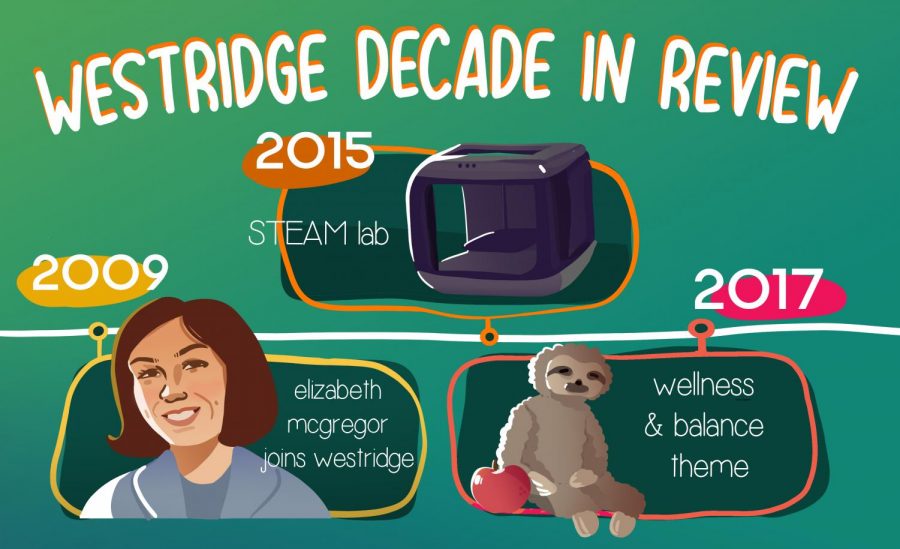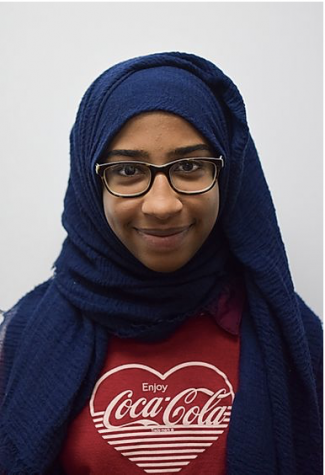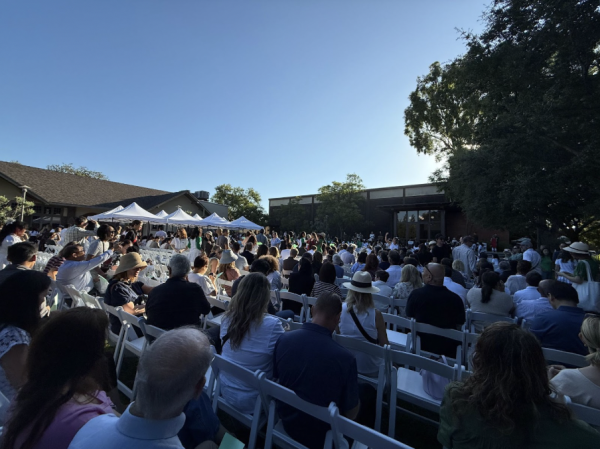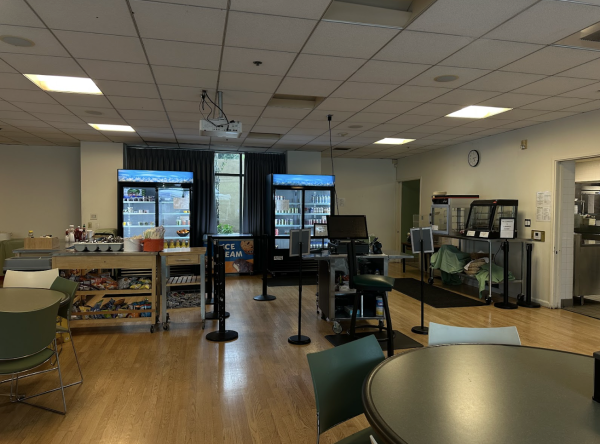2020 Hindsight: Westridge Through the Decade
Zaynab E.
2020 marks the arrival of a new decade and invites the Westridge community to pause for reflection and evaluation of its numerous highlights.
On July 1, 2009, Elizabeth McGregor joined Westridge as the new Head of School, replacing the former Head, Fran Scoble. Along with her trademark British accent, McGregor brought an abundance of new ideas.
“As the graduate of girls’ school, I was so excited about coming to Westridge. I’d come to know the school over the years that I had worked in LA, and so I knew the school and loved its mission.” McGregor commented, looking back upon her decade with the school. “We knew we had to put more resources into college counseling, and into student athletics… The success that you now see around our college counseling office, around athletics, were the seeds that we sowed way back when I first came in.”
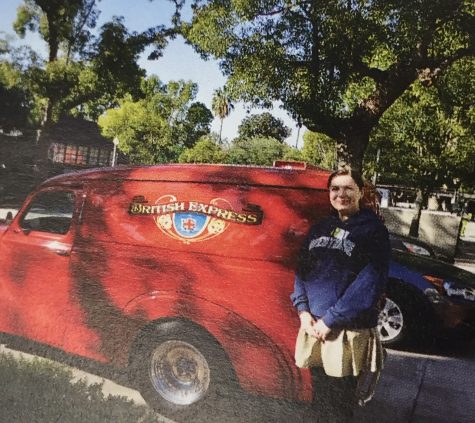
She continued to describe some of the successes Westridge is celebrating in 2020. “We’ve been very successful in many of the things that we’ve done to ensure the future of the school… our endowment and annual fund have increased, our student population has grown, our mission and core values have strengthened, and we are more widely known. By every hallmark that you look at in terms of a school’s success, it’s been very encouraging.” McGregor explained, knocking on wood for good measure.
Ms. McGregor’s work, along with that of the board and other administrators, largely framed the growth Westridge has experienced in the past ten years, including many of the successes Westridge boasts in 2020.
CAMPUS
Since Westridge’s founding in 1913, the campus has expanded from just Pitcairn and MUDD buildings to include the Lower School Campus, a new Performing Arts Center, the Commons, Frank Field, as well as the most recently built science building.
The completion of Westridge’s science buildings in 2010 added a modern aspect to the campus architecture. Built to facilitate the expansion of Westridge’s science program, the building is distinguished by its glossy green panels and boasts a LEED certification (Leadership in Energy and Environmental Design) by the U.S. Green Building Council, an organization that promotes environmental project design, development, and operations. The building includes energy-saving solar panels, as well as the “Eco-Dimming System,” which saves around 20 percent of the energy used to light up classrooms.
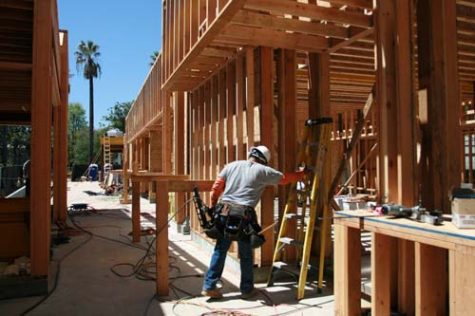
In 2015, the Steamwork Lab was added to campus and launched new initiatives that encourage students to be creative with science and technology. High school students were given access to technology such as 3D printers and laser woodcutters, essentials for the Steamwork and Art classes taught to Upper and Middle School.
David Prince helped launch the Steamwork studio after previously teaching Middle School art on campus, and Prince has watched the program expand over the years. “The lab has grown incrementally; we’ve gotten funding sources over the years that have allowed us to purchase equipment each year a little bit, so we started with one 3D printer and then we had two 3D printers. Then we got a couple more, then we got a laser cutter and some vinyl cutters,” said Prince.
Capital projects like the Science Building and STEAM signaled Westridge’s move toward more sustainable practices throughout the decade. In 2011, steps like the “Bring Your Own” campaign were taken to decrease the amount of waste accumulated by students. Similarly, in the past few years, the student-run Green Guerillas club and faculty have pushed for better sustainability on campus, including the placement of new compost bins as of last year.
CURRICULUM
Building projects like the STEAM lab and the Science Building made possible Westridge’s new emphasis on the importance of women in STEM, an effort spearheaded this decade by McGregor and the Board.
“[Emphasis on] women in science [and] women in computing and engineering are significant and important areas of focus, and we’ll continue to emphasize them. That’s why we put the Steamwork design studio right in the middle of the campus, because we wanted people to be able to see what’s going on and inspire and create excitement,” said McGregor.
Science clubs have expanded from just Science Olympiad to include both Rocketry and Robotics. This decade, rocketry has grown into one of the most popular and successful clubs on campus. Laura Hatchman, Head of the Science Department, is excited about this decade’s focus on STEM and explains its importance for young women.
“One of our major goals is to give students the confidence to emerge from a strong science program and, if they are interested in science, to carry that confidence into college because that’s where we lose women in STEM. … And for those who are not interested in pursuing science as a career later on, hopefully it empowers them to learn about their bodies or how the world works, to be scientifically literate citizens,” Hatchman offered.
In 2018, the art requirement radically changed. Music education had been a longstanding tradition and arts requirement for Westridge graduates. Students now have the freedom to take two years of any art, rather than one year each of music and visual art. For over a decade, the administration had been discussing a major flaw in the art program and requirement: it didn’t give students the opportunity to study theatre for academic credit. While all students spent time fulfilling this requirement through the arts and music programs, many also spent countless hours after school participating in theatre. Over the years, parents and students alike lamented the lack of academic credit for participation in theater productions. Finally, in 2017, Theatre Department Chair Brandon Kruhm proposed a theatre program that would include acting and directing classes for credit.
With the introduction of the theatre program came a larger discussion over the art requirement as a whole, leading to the official change in required courses.
MISSION
The 2014 Strategic Plan targeted two specific areas for improvement: Student’s social and emotional well-being and diversity, equity, and inclusion work (DEI).
In 2014, Westridge released its five-year strategic plan which placed importance on maintaining students’ “physical and emotional wellness.” The official plan read, “Westridge will expand and implement programs that support girls’ social and emotional development, especially the capacity to build nurturing relationships based on mutual trust and respect.”
The plan also stated, “Westridge will promote ethical decision-making that values diversity of all kinds and inspires girls to lead lives of compassion and conviction.”
In order to achieve these goals, Westridge brought in speakers such as Lisa Damour, an expert in the emotional well-being of young girls, incorporated strategies for coping with stress into the Human Development curriculum, and developed the Love Your Body and Mind Campaign in 2016, headed up by Peer 2 Peer. Gary Baldwin, Dean of Upper School, explains how these efforts have taken shape in the past decade.
“I think that Westridge, maybe more so than most independent schools, is realizing all of the different aspects that go into educating kids. So it’s more than just making sure that [educators are] teaching math and chemistry and making sure that you’re reading literature, [but] that there is [also] a social and emotional component of it that needs to be looked after… Really all the things that go into setting up the environment for learning are as important as the actual teaching that you do,” Baldwin said.
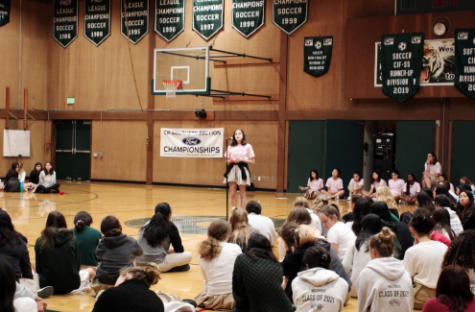
Efforts toward expanding the nature of Westridge education haven’t always been entirely successful. For example, many felt the 2017-18 Wellness and Balance theme, symbolized by sloth, flew in the face of students’ lived experience at Westridge. Lily N. ’20 explains, “While I believe the theme of sloths was well-intentioned, I feel like it came across as an excuse for not changing policy or having critical discussion about the root of stress and mental health at Westridge.”
Additionally, work towards diversity, equity, and inclusion (DEI) has been an important facet of the past ten years. Juanita Jimenez, who has taught ceramics for over 40 years, has observed an increase in Westridge’s diversity and inclusion in the past decade. “The student body is becoming more diverse; the faculty is becoming more diverse.”
Currently, a little more than half of the student body is made up of people of color, the result of the 2014 Strategic Plan which recognized the importance of diversity, though the plan itself did not provide an explicit agenda to accomplish DEI goals. Many of these significant changes throughout the decade have been student-driven. Without students’ commitment to groups such as Student Voices or P2P, the campus wouldn’t be making the strides it has since 2010.
Erisa R. ’21, co-head of Student Voices, believes Westridge isn’t progressing as much as it should. “I don’t believe that the students that come in diversify Westridge at the level that we talk about or expect. … I think there’s still a lot of work to be done in terms of educating on campus [and] DEI, which is why conferences like Youth Action Project (YAP) and Student Diversity Leadership Conference (SDLC) are so great because we have this opportunity to get a perspective outside of Westridge.”
When asked how Student Voices contributes to DEI work at Westridge, Erisa pointed to the assemblies they hold throughout the year. “[With] the assemblies we put on, our goal is to highlight marginalized and typically unheard voices, especially what that means in a private institution like Westridge.”
Second-year Peer 2 Peer student Camilla C. ’21 explains the ways in which the program contributes to the school’s work toward students’ wellbeing. “I think Peer 2 Peer is one of the most useful emotional and wellness support groups on campus… A lot of times a person may think their only outlet on campus are adults, which they definitely are, but having a support group closer in age and with a similar school experience is a different kind of bond that I think is really special.”
FUTURE
But with all of this progress in mind, where is Westridge looking for the future? According to the newly released 2020-25 Strategic Plan, continued efforts toward Social Emotional Wellness and DEI remain a top priority, along with new goals centered around student leadership and a reevaluation of Westridge’s educational program.
Work in DEI for the next few years has been systematically planned out and involves multiple comprehensive undertakings to address potential gaps in the curriculum, as well as a lack of diversity in the student and faculty bodies. In 2019, an anonymous alumna donated $150,000, which will sustain these goals for years to come.
A reevaluation of Westridge’s curriculum and education overall has also been discussed in depth over the past few years. With both access to new technology and an increase in data surrounding education, the country appears to be moving away from the standard, fixed curriculums of the past as fewer colleges are accepting AP credits, and standardized testing is becoming increasingly less important to the college admissions process. McGregor explains how Westridge is trying to reflect this change.
“[Our goal is] To really make sure that we have the most relevant academic program which deeply engages our students in their learning in the most meaningful ways. So students are really intrinsically motivated and we’re preparing them best for not only for college but also for their world beyond. We also want our students to have a strong sense of who they are, how they can advocate for themselves, how they can take care of themselves socially and emotionally.”
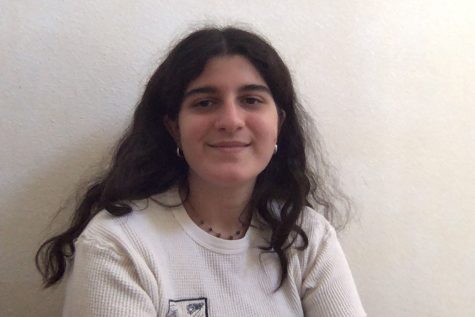
Sophia is the 2020-2021 Managing Editor of Spyglass and super excited to be taking on the position this year. She’s dedicated to building community,...




























![Dr. Zanita Kelly, Director of Lower and Middle School, pictured above, and the rest of Westridge Administration were instrumental to providing Westridge faculty and staff the support they needed after the Eaton fire. "[Teachers] are part of the community," said Dr. Kelly. "Just like our families and students."](https://westridgespyglass.org/wp-content/uploads/2025/03/dr.-kellyyy-1-e1748143600809.png)






















